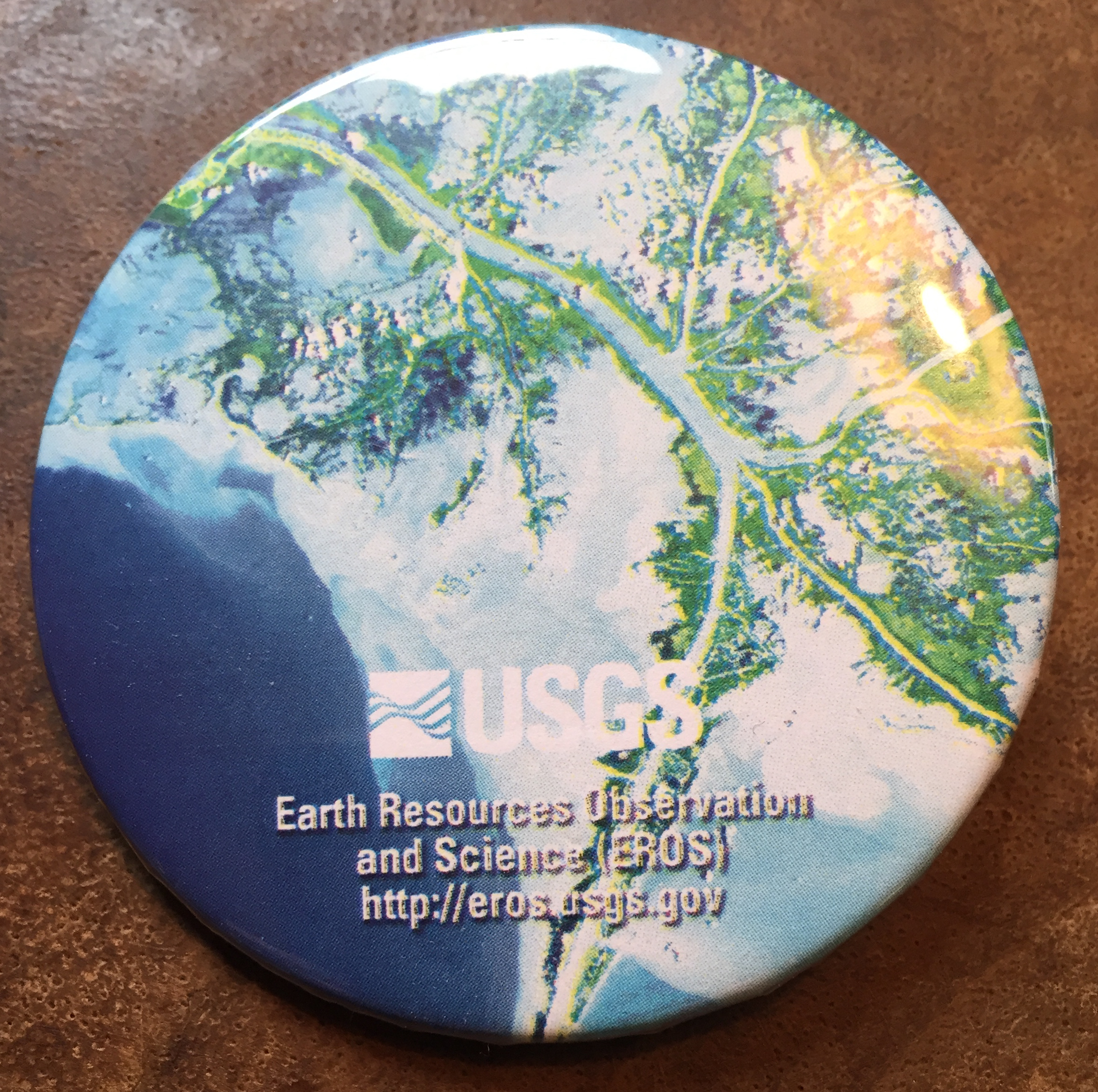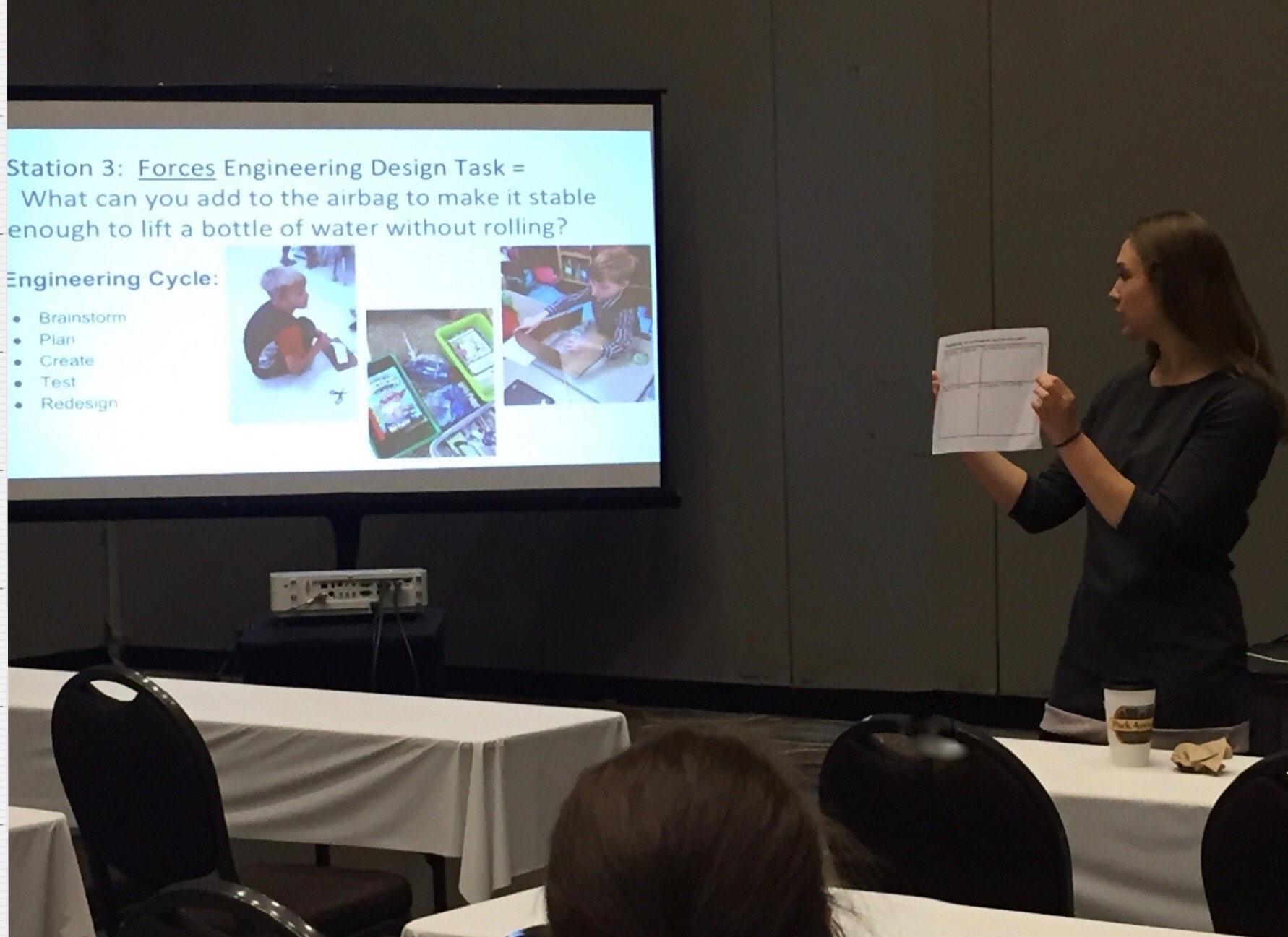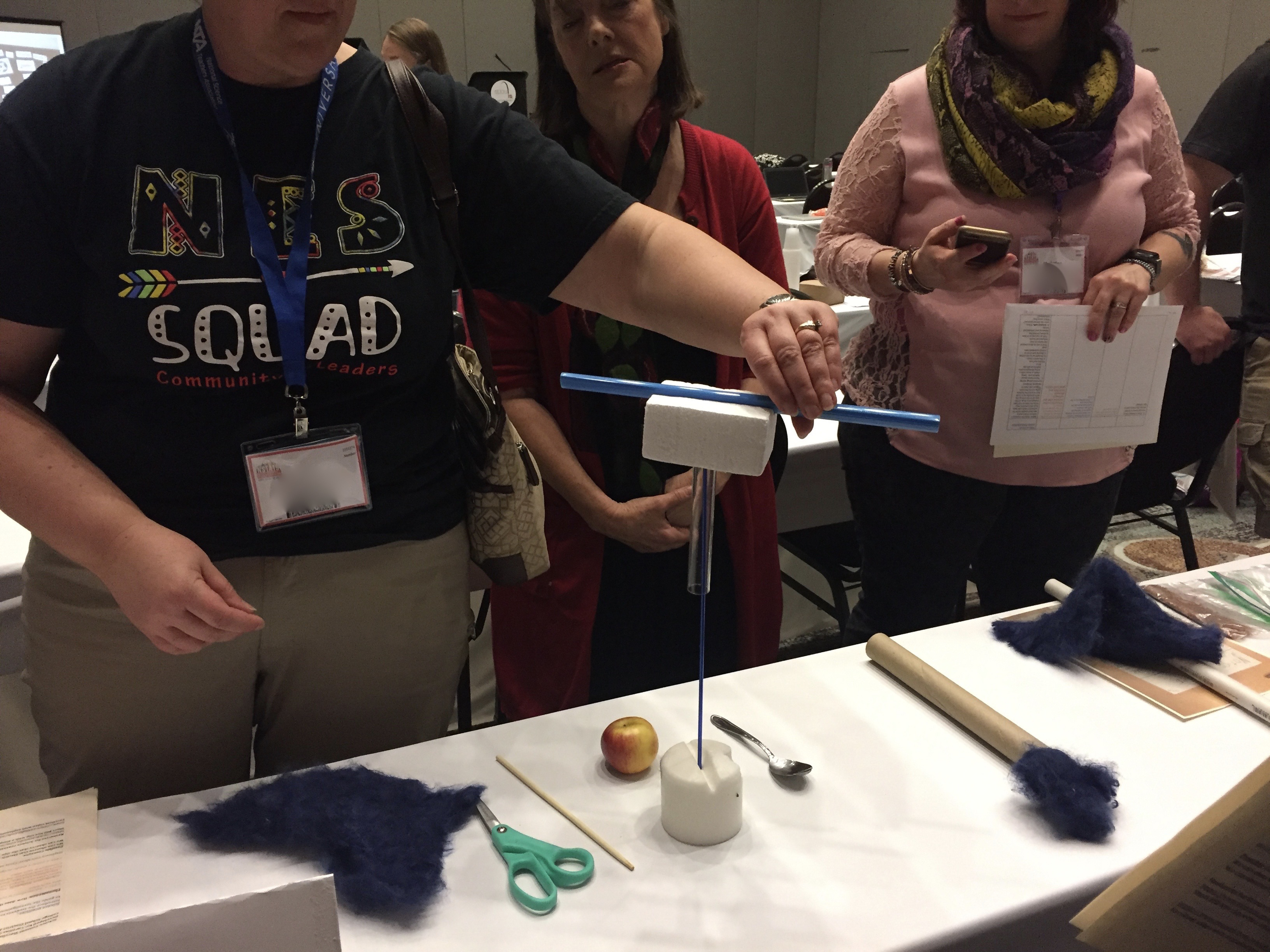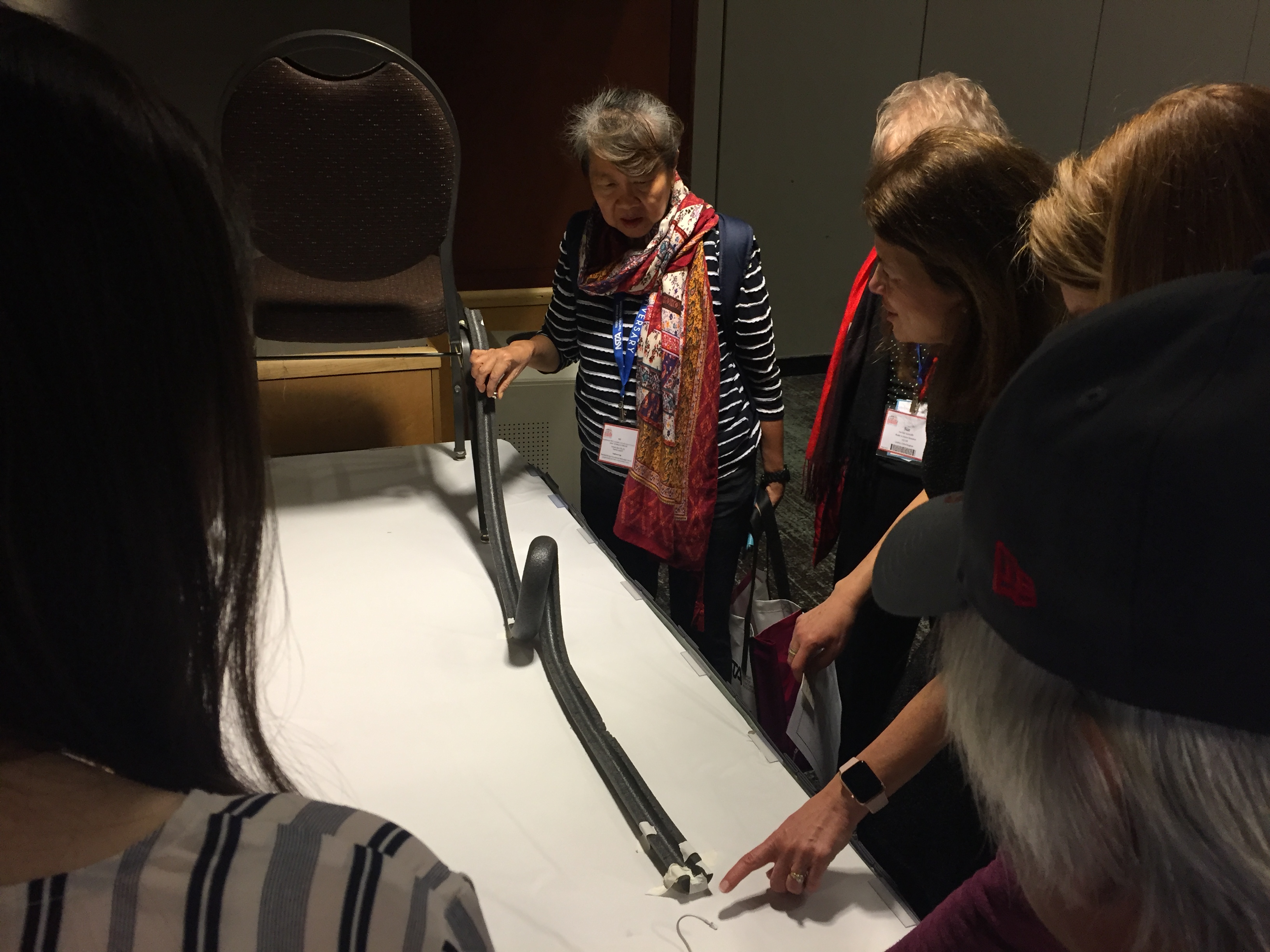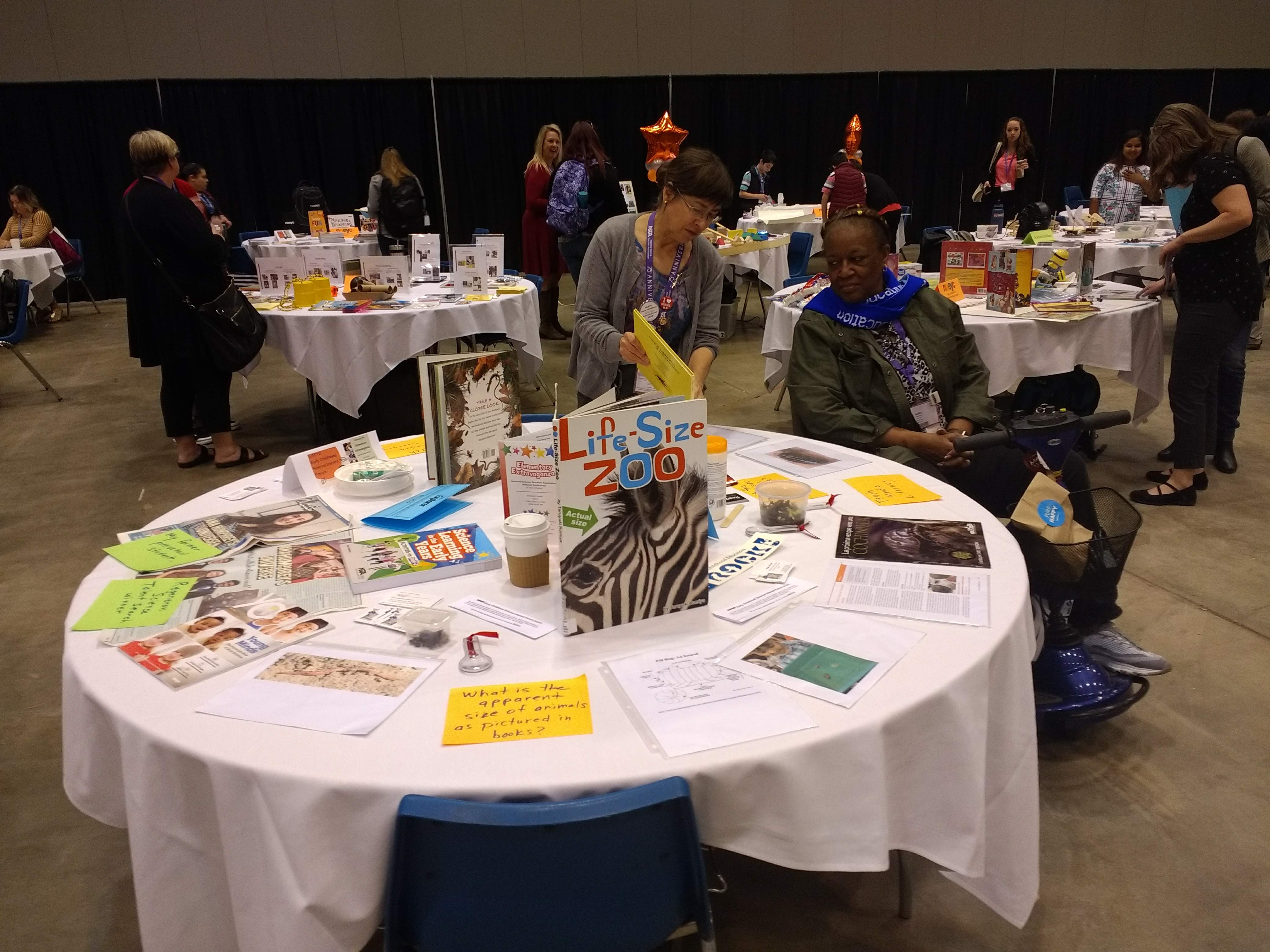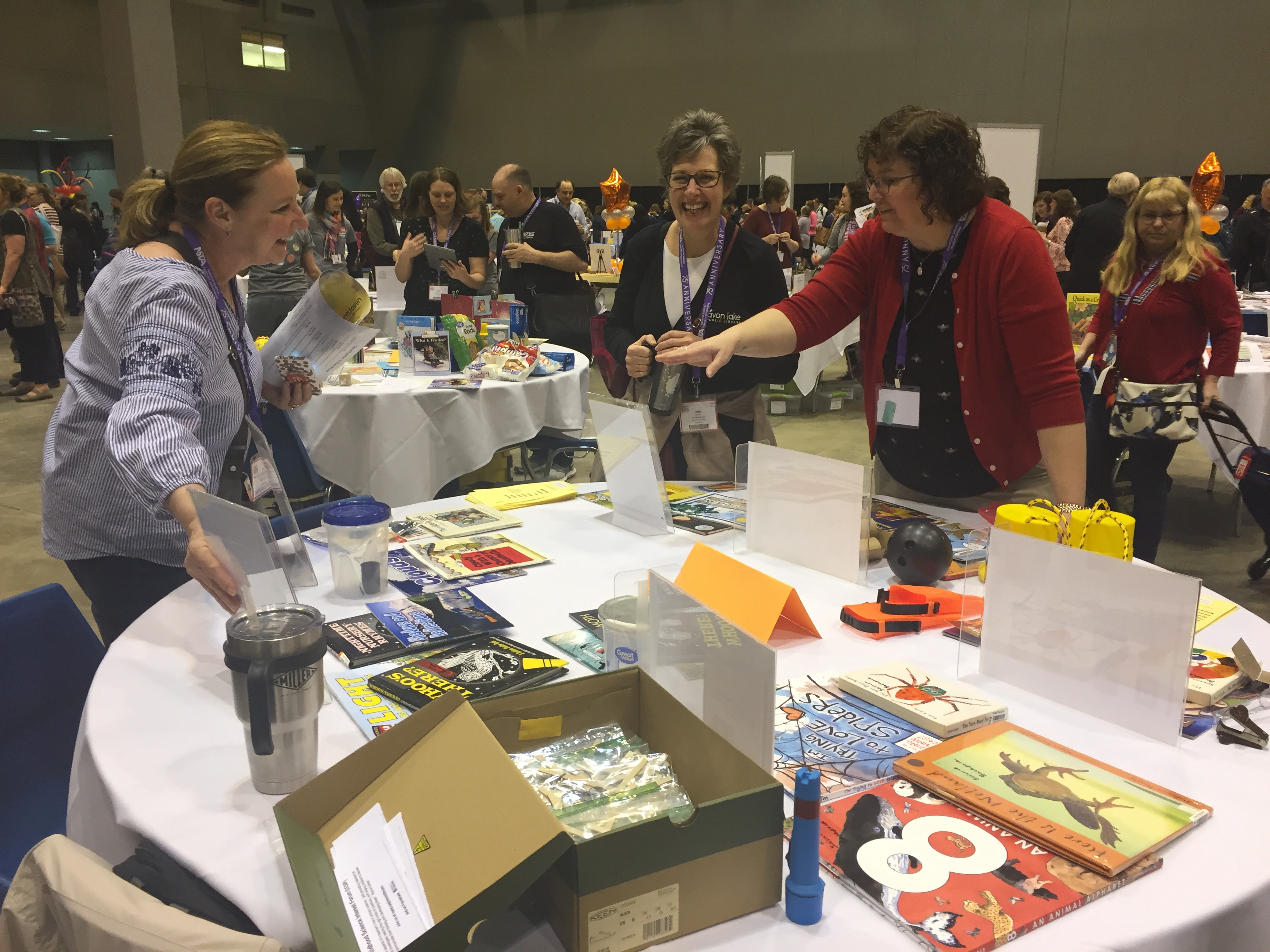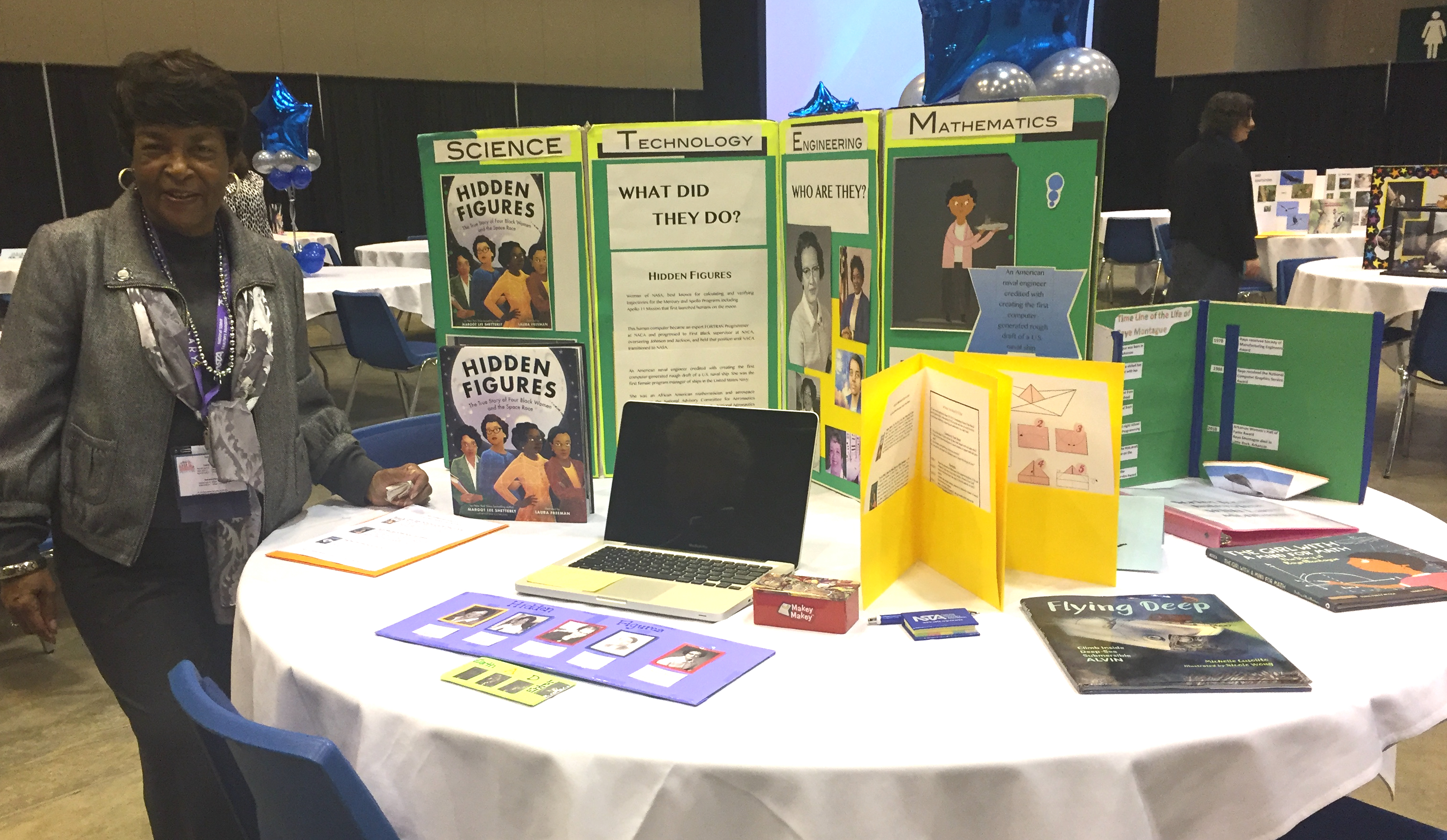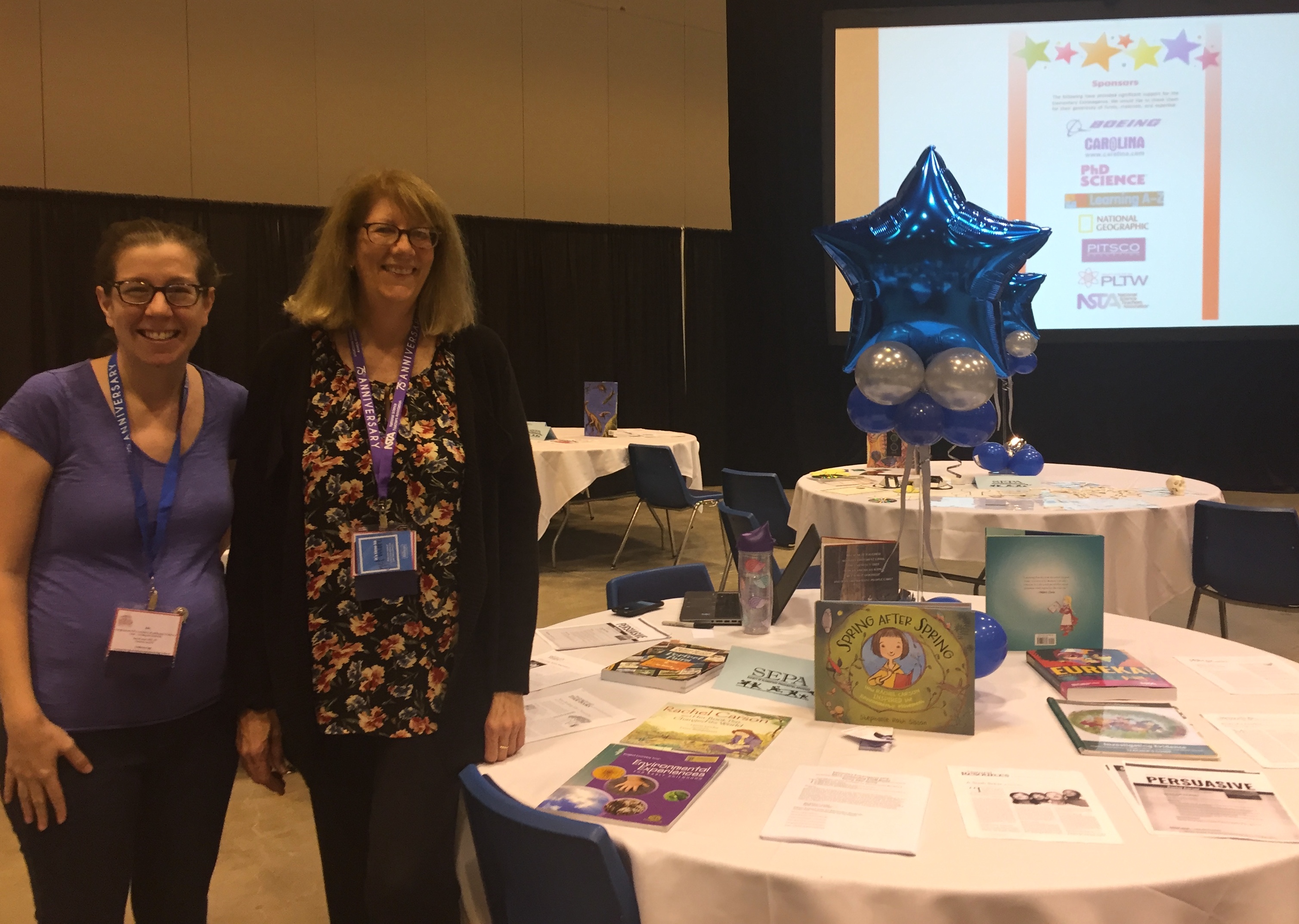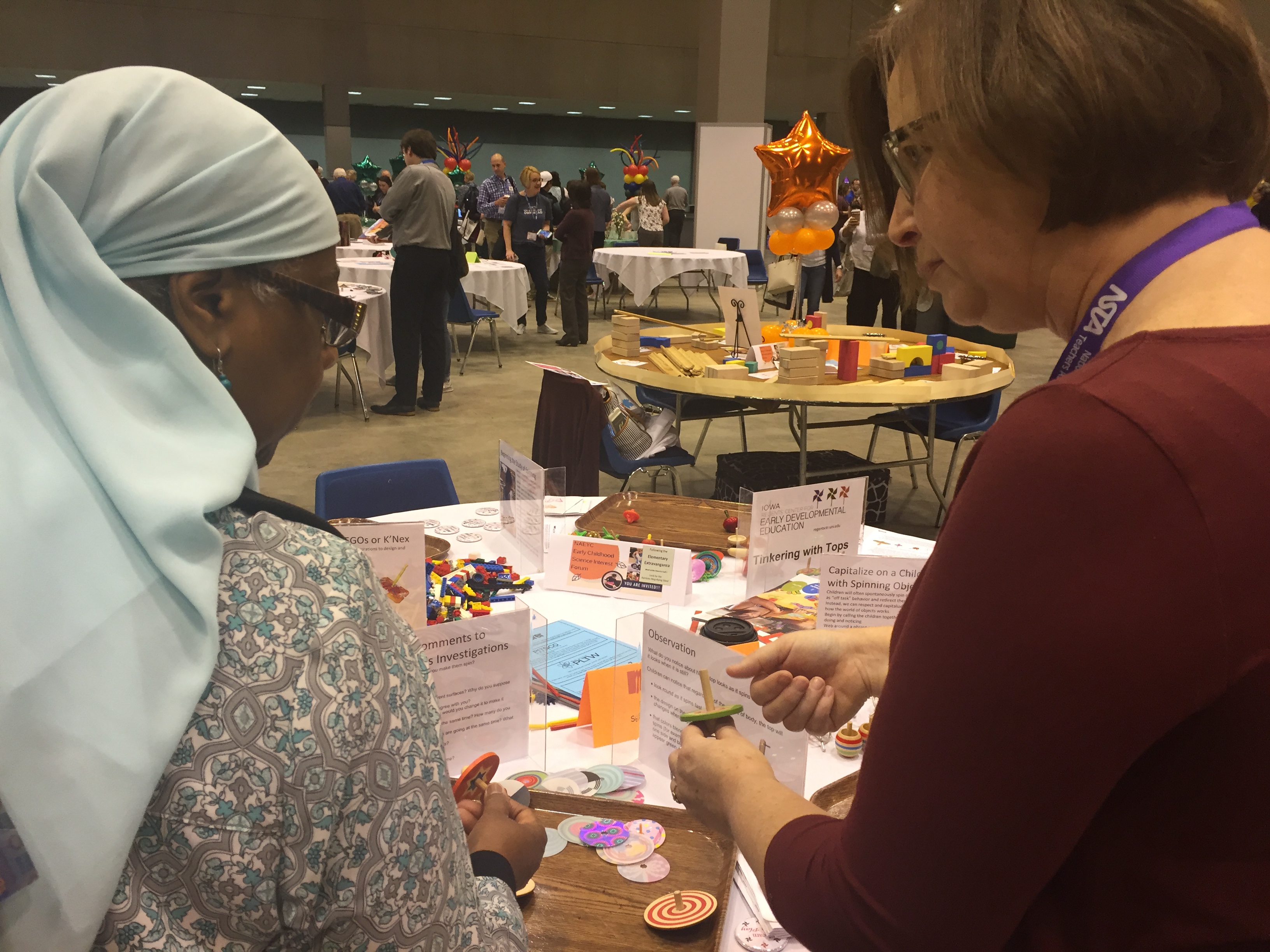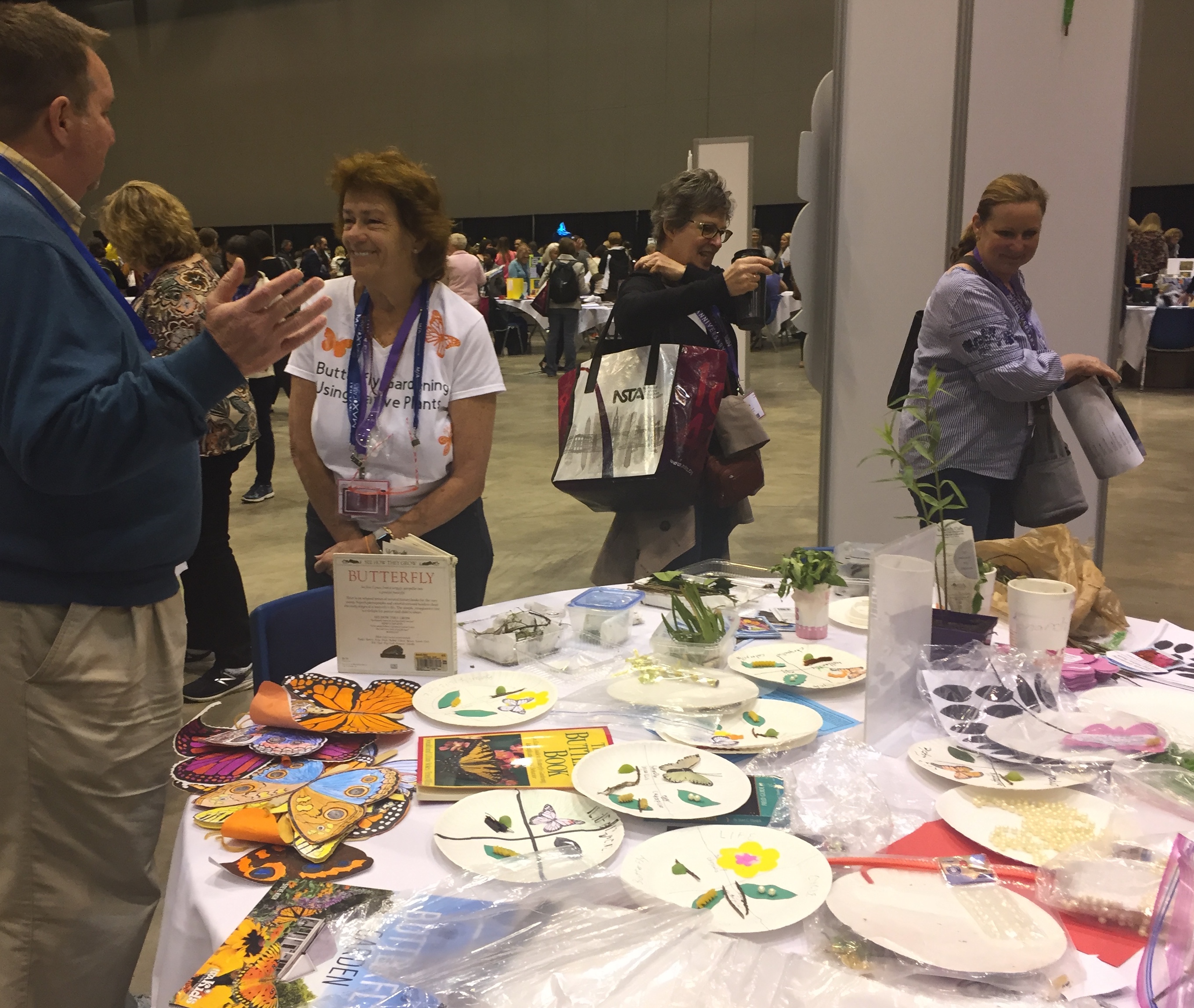Handouts available, NSTA19 was great—thanks Missouri!
By Peggy Ashbrook
Posted on 2019-04-27
 Where but at an NSTA national conference can you: See a possible future for your students in the keynote speech by retired astronaut and U.S. Navy captain Scott Kelly who saw the Earth from space 520 days in his career, get a free button with a photo of a natural feature of our beautiful Earth as seen from space at the USGS booth, then go to ERSI’s booth in the Exhibit Hall and have the location of that image instantly identified, AND, later meet an educator colleague from the state pictured who you met through her science education outreach on Twitter!?
Where but at an NSTA national conference can you: See a possible future for your students in the keynote speech by retired astronaut and U.S. Navy captain Scott Kelly who saw the Earth from space 520 days in his career, get a free button with a photo of a natural feature of our beautiful Earth as seen from space at the USGS booth, then go to ERSI’s booth in the Exhibit Hall and have the location of that image instantly identified, AND, later meet an educator colleague from the state pictured who you met through her science education outreach on Twitter!?
- Do you know where this is?
The early childhood session offerings at the NSTA 2019 conference in St. Louis included engineering design and habits of mind, using strategies to meet students’ social and emotional needs for effective science teaching, using natural materials to engage students in exploring structure and function, connecting school science learning with learning at home, using visual provocations (visual questions) for both engaging and assessing students, understanding that all science learning is cultural, and many others, including very specific tips for teaching, such as making and using a “snow catcher.”
For teachers of children up to age 8, these sessions provide ideas and lessons to implement in our classrooms and the lessons can be extended for older students.
 The number of sessions at NSTA conferences that are specifically for early childhood educators continues to grow each year. Although the conference is over, handouts for some sessions are still available. Search the list of sessions in the NSTA conference “Session Browser,” using key words identifying your interests or grade level Audience to find sessions focused on early childhood science education. Or scroll through the entire listing of sessions and look for “Available Handouts” with an icon link to download files from the session.
The number of sessions at NSTA conferences that are specifically for early childhood educators continues to grow each year. Although the conference is over, handouts for some sessions are still available. Search the list of sessions in the NSTA conference “Session Browser,” using key words identifying your interests or grade level Audience to find sessions focused on early childhood science education. Or scroll through the entire listing of sessions and look for “Available Handouts” with an icon link to download files from the session.
 For example, search for the Thursday 8 am session, “Amplify Family Science Literacy,” by Patti Taylor, a preschool teacher and building science coordinator for St. Malachy School in Chicago. She generously shared her slides about her programs use of “science backpacks” as a fun way for families to enhance science literacy. She lists each fiction and non-fiction book, and other materials that go into backpacks for investigating concepts about Animals, Animal Homes, Force and Motion, Light (4th grade), Plants, and Weather. And she links to a full set of files to build your own Science Backpack program—introductory letter to families, permission form template, Backpack return note, and complete guidance for each of the science topics.
For example, search for the Thursday 8 am session, “Amplify Family Science Literacy,” by Patti Taylor, a preschool teacher and building science coordinator for St. Malachy School in Chicago. She generously shared her slides about her programs use of “science backpacks” as a fun way for families to enhance science literacy. She lists each fiction and non-fiction book, and other materials that go into backpacks for investigating concepts about Animals, Animal Homes, Force and Motion, Light (4th grade), Plants, and Weather. And she links to a full set of files to build your own Science Backpack program—introductory letter to families, permission form template, Backpack return note, and complete guidance for each of the science topics.
A group of educators from State College, Pennsylvania had us experience how connected storylines encourage students to apply science concepts they’ve learned to engineering challenges related to energy, force, and states of matter. We tested the lifting strength of a bag of compressed air, made a looped ramp to explore marble motion, and used a levitator and a versarium to test for static charge attraction. A what!?
Open just one of their handouts to see the extensive support for educators to implement the NGSS investigations created by Kate Hallinger, Kimber Hershberger, Colleen McCracken, Megan Germ, and Deana Washell. Their write-ups include many places for student science talk and the text is helpfully color-coded aligned with the NGSS dimensions.
 Missouri science educators welcomed the conference goers and early childhood educators were especially enthusiastic. Stephanie Airoldi and Julie Binning make the most of every minute they can take children outside, going on nature walks using “science eyes” (cardboard tubes help children block out everything but what is in the view), teaching outdoor behavior expectations and tending a school garden, playing in the sandpit and exploring capacity, observing a tree year round, saving pumpkin seeds in the fall to plant in the spring, reading books, using a
Missouri science educators welcomed the conference goers and early childhood educators were especially enthusiastic. Stephanie Airoldi and Julie Binning make the most of every minute they can take children outside, going on nature walks using “science eyes” (cardboard tubes help children block out everything but what is in the view), teaching outdoor behavior expectations and tending a school garden, playing in the sandpit and exploring capacity, observing a tree year round, saving pumpkin seeds in the fall to plant in the spring, reading books, using a  “snow catcher” (felt square glued on small paper plate with a tongue depressor handle) during their rare snowfalls, and writing about the weather. They have noticed that students who struggle with language and math thrive and are successful during nature learning times. The time spent outside can be as short as 2-40 minutes for tree observation and up to 70 minutes depending on the weather. They presented with Steven Juhlin, Education Program State Coordinator, Missouri Department of Conservation, which supports their nature education with grants for field trips and online resources.
“snow catcher” (felt square glued on small paper plate with a tongue depressor handle) during their rare snowfalls, and writing about the weather. They have noticed that students who struggle with language and math thrive and are successful during nature learning times. The time spent outside can be as short as 2-40 minutes for tree observation and up to 70 minutes depending on the weather. They presented with Steven Juhlin, Education Program State Coordinator, Missouri Department of Conservation, which supports their nature education with grants for field trips and online resources.
The Elementary Extravaganza, held on Friday at 8 am, has over 60 handouts to download at no cost. Click on the title and scroll to the bottom of the pop up menu to see the titles of each file.
- Photos by Dave Chizek
The NSTA conference app was a great help and can still be used to locate sessions, exhibitors, sponsors, and other conference information. Proposals to present at NSTA conferences are no longer being accepted for the 2019 conferences or for the 2020 Boston National Conference but there are other conferences coming up so check the NSTA conference website to see when proposals will be accepted for the 9th Annual STEM Forum & Expo in Louisville, Kentucky: July 22–24, 2020, or any of these 2020 area conferences:
- Pittsburgh, Pennsylvania: October 29–31
- New Orleans, Louisiana: November 19–21
- Phoenix, Arizona: December 10–12
Start planning to attend and present at an NSTA conference by using the “Presenting at NSTA Conferences,”and “Tips for Newcomers” pages, and look on the specific conference pages for scholarship opportunities and a “justification letter” to support your request for funding or time away from your class.
Disclaimer: The views expressed in this blog post are those of the author(s) and do not necessarily reflect the official position of the National Science Teaching Association (NSTA).



